Directors' Blog
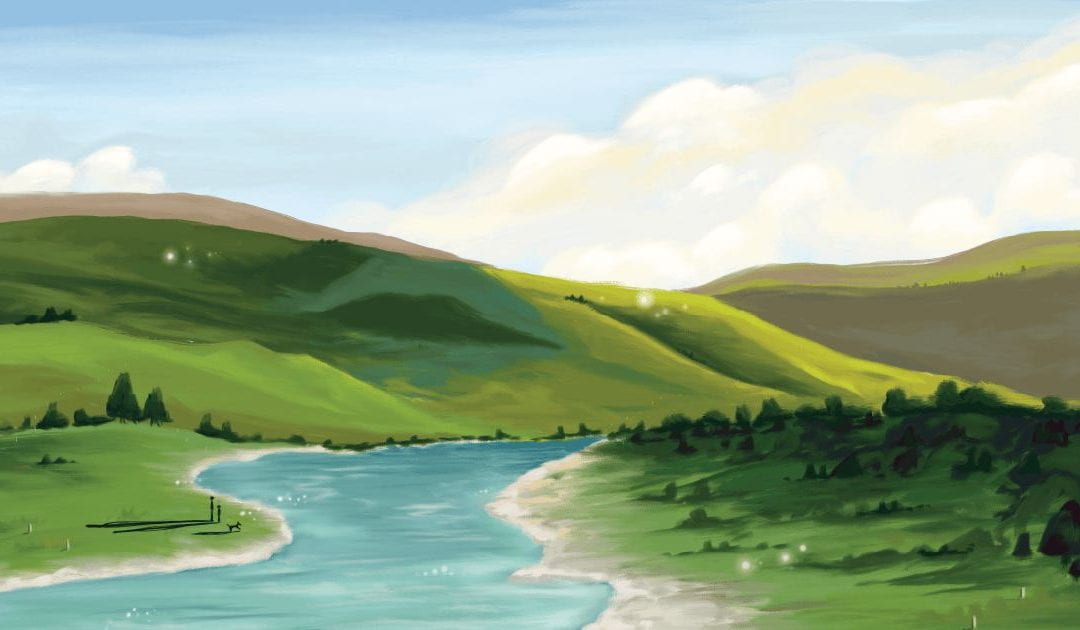
Do we build the dam?
1 May 2023
A collaboration between research assistant Claire Grant and illustrator Jean Donaldson. Edited by Jonathan Burgess.
“Right, let’s go Pup!” Dad sing-songs to our dog Blue as she bounces from left to right, bow-wowing at the top of her lungs. She’s just as excited about going hunting as we are. We’ve been through our list: boots – check, keys – check, rifle – check, but we’ve probably forgotten something important, as Mum likes to point out. Up goes the screechy roller door and we’re finally on our way.
Driving across the bridge we both look west, our eyes following the Waipawa river up to the Ruahine and Wakarara Ranges. “Oh yeah, not looking too bad aye,” I say in my blokiest voice as the blue-green mountains lean over us, silhouetted by clear skies. “Oh mate,” Dad replies. The Waipawa river leads the way for the first half of the drive, before it splits in two and the Makaroro takes over as our guide.
As we drive alongside the rivers, Dad and I reminisce, “Remember when we used to float down the river all the way from the Waipawa Bridge out to Patangata at the start of summer?”
“Yeah that was fun as. But we had to walk half the way because the river was so low.”
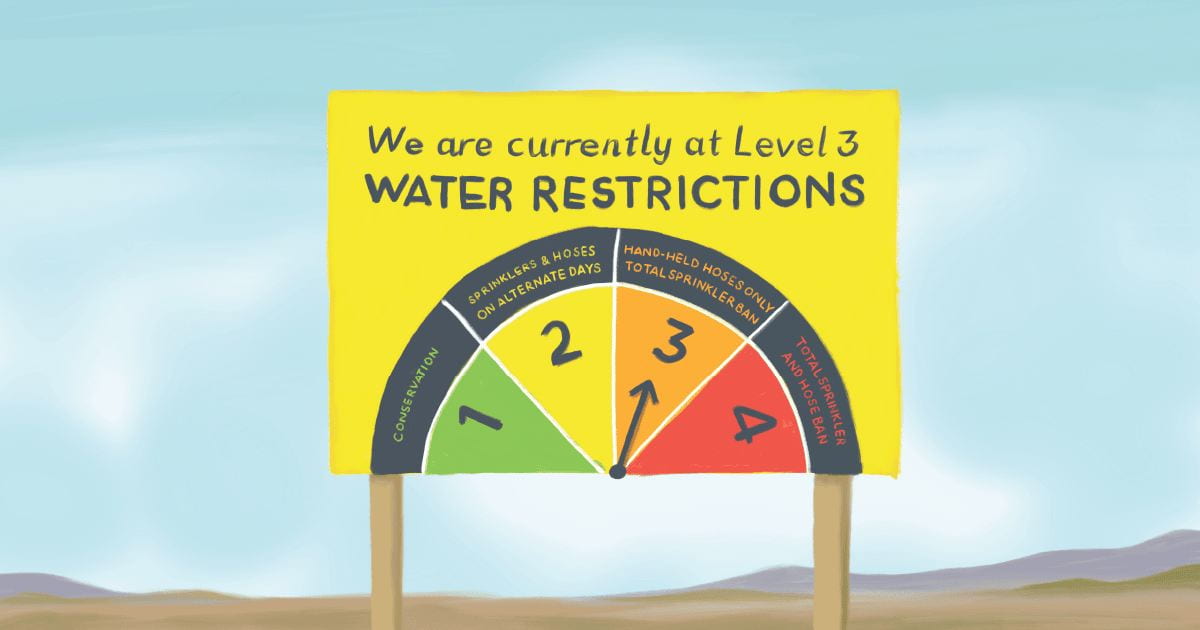
We’re halfway there when we have to stop and wait for a column of dairy cows to cross the road, udders swollen and swaying. We give the cows voices and personalities. Betsy’s a complainer, “Walking, walking and more walking” she says in a disgruntled drawl. And here comes the farmer, Trev, on his quad. Good bloke.
The road crinkles as the land compresses and the foothills emerge from the plains. We round a bend and the mountains fill the sky. Sweeping down the hillside to the Makaroro’s edge I wind down my window and breathe in the scent of toasted grass, while doing my best to feel the spirit of this place with the intensity I felt as a kid. It’s friendly yet ominous, inviting yet threatening.
Here is where the Makaroro begins its journey towards the pasture-land of Central Hawke’s Bay. It’s the same place I have returned to throughout my life, and each time it’s almost exactly as I remember it. It fills my soul to be here, to return home.
But this is the proposed site for the Ruataniwha dam.
*****
Droughts and dry spells have plagued Central Hawke’s Bay over the past several years, and climate change has pushed water security to the top of the list of local issues. The ecological health of the Tukituki catchment, within which the Waipawa and Makaroro rivers lie, is a major concern, though it is constantly vying for attention against agricultural irrigation demands.
With less water flowing in the rivers the concentration of pollutants increases, and ecological issues such as toxic algal blooms arise. The proposed Ruataniwha Dam was supposed to be Hawke’s Bay Regional Council’s silver bullet solution to support freshwater ecosystems and provide secure water for irrigation.
The council’s approach is an example of top-down environmental management. Top-down management tends towards the view that technology can provide environmental salvation and that systemic changes are unnecessary. When viewed in this way, the best solutions are those which are quick, cheap, and cause the least amount of social disruption. Through this lens, a dam is a logical solution.
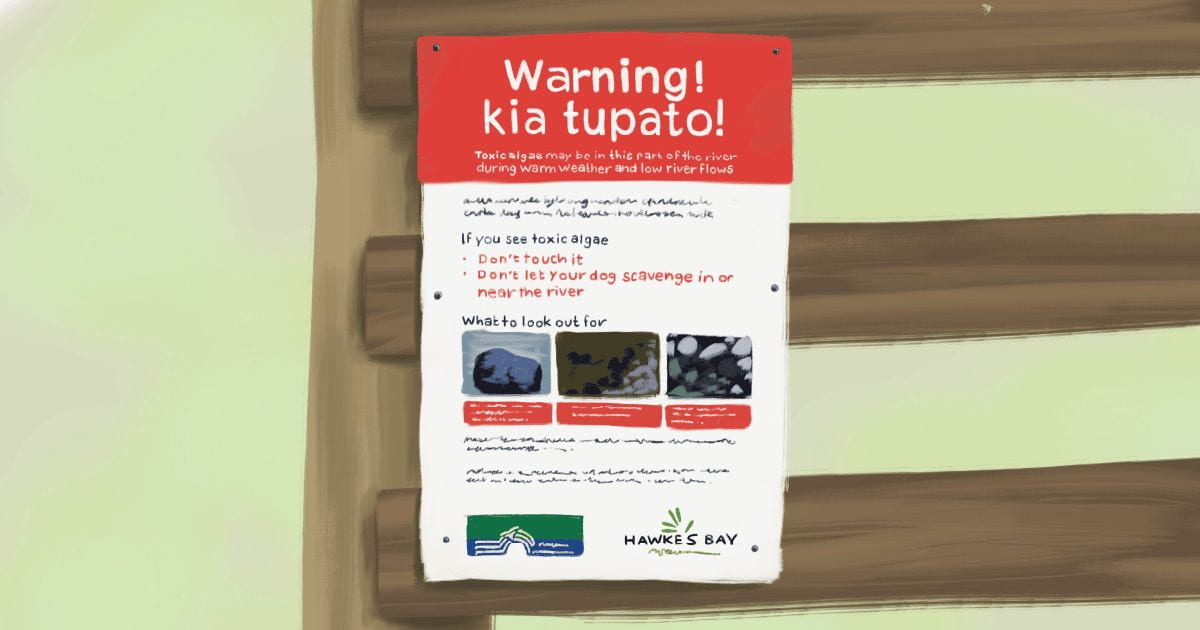
This reliance on technology reflects only one of the wide range of worldviews that exist within communities. Take my position in the Ruataniwha Dam debate as an example. I am connected with the Makaroro river in a way which makes it more than just a resource. It is a lifetime of memories. It is a being with a spirit. It is so much more than a feasible site for water storage infrastructure. From my view, a dam is not an option.
My view is an example of a bottom-up environmental approach. Bottom-up approaches tend to be built on an holistic foundation. The environment is not viewed as an object apart from humanity, which exists only as a resource for economic gain.
Taking a bottom-up approach leads to very different solutions to environmental issues. Perhaps we should diversify our economy to increase resilience, or perhaps we need to build stronger relationships between people and their freshwater ecosystems to encourage responsible use. Such solutions are not quick or cheap. They are complex, and they certainly don’t avoid social disruption. They recognise the diversity of understandings and potential solutions that don’t fit within a top-down view.
There is rarely a perfect solution to environmental problems, whether it’s water scarcity in Central Hawke’s Bay, deforestation in the Amazon, or overfishing in the Southern Ocean. But ultimately we all want our communities to live prosperously in healthy environments for generations to come. When different ideas about what should be done about environmental issues clash and bring each other to a stand still, what do we do? The problems still exist and we need to do something.
So, do we build the dam, or do we not?
Claire Grant has been exploring top-down and bottom-up approaches as a research assistant on Te Pūnaha Matatini’s Ki te toi o te ora: System change to reverse health inequality and environmental degradation project.
Jean Donaldson is a designer and native bird fanatic based in Te Whanganui-a-Tara. You can see more of her work at https://jeanmanudesign.com/.
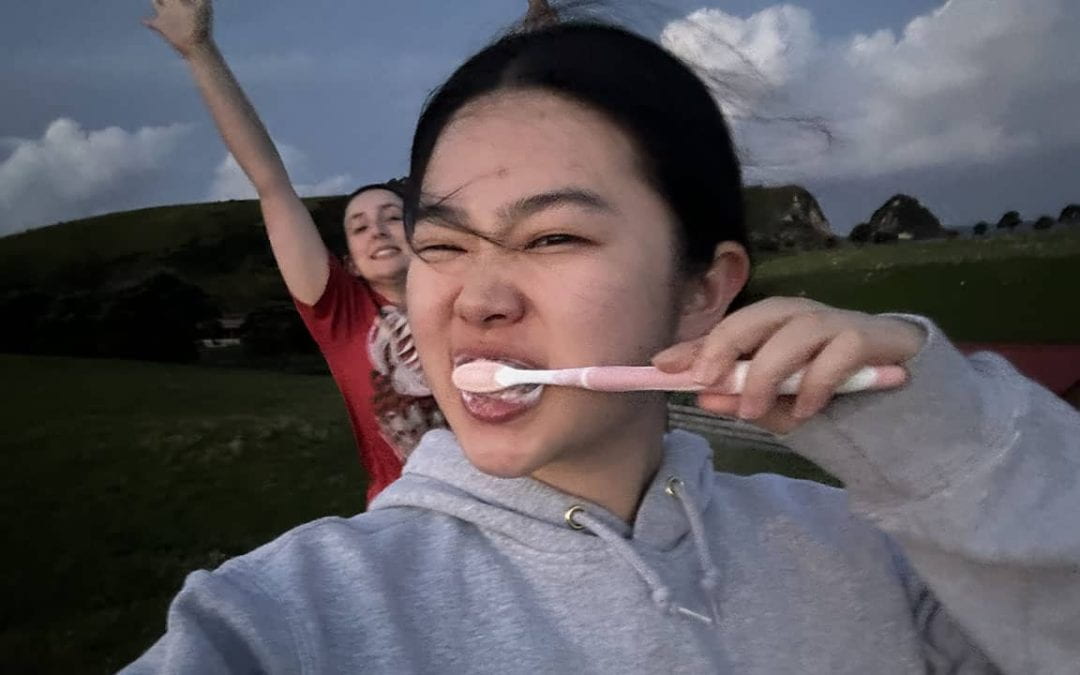
Te Pūnaha Matatini supports summer interns
Image: Rachel Liu (front) and Anya Christiansen undertook archaeological field work on Ahuahu Great Mercury Island as part of their summer internship.
2 March 2023
It’s lucky that Jed Thompson-Fawcett’s summer internship supervisor didn’t tell him how much the equipment he was working was worth before she let him do an experiment with it.
Jed (Ngāti Whātua) was one of 13 interns supported by Te Pūnaha Matatini over the 2022-23 summer, on projects ranging from natural language processing of te reo Māori and philopatry of seabirds through to defense behaviour of wētā and obsidian hydration dating.
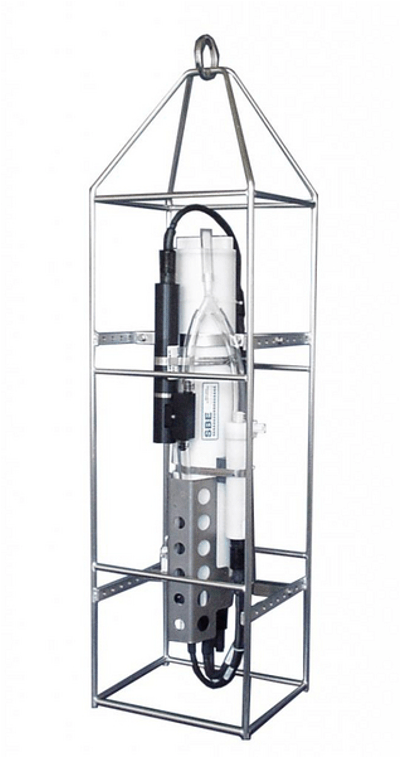
The SBE 19plus V2 SeaCAT is delicate and expensive.
Jed was working with Te Pūnaha Matatini Principal Investigator Inga Smith to compare measurements between two conductivity, temperature and depth (CTD) instruments in supercooled water. These measurements are important for our understanding of sea ice, which influences the global climate.
The majority of Jed’s work was analysing data collected on the instruments by Inga and a small team in McMurdo sound, but she also let him have a go on one of the CTDs.
The SBE 19plus V2 SeaCAT has a glass conductivity cell with electrodes throughout it. It’s delicate and expensive. “I’m very glad that Inga didn’t tell me how much it cost,” says Jed. “I wouldn’t have done the experiment if I knew!”
Rachel Liu and Anya Christiansen used more robust equipment for their archaeological field work on Ahuahu Great Mercury Island, working with Te Pūnaha Matatini PhD student Alex Queenin. They got a lot of hands-on experience with vibracoring and surveying. And although they had to haul the surveying equipment up and down a steep hill about 50 times, they both enjoyed the experience.
Alana Rodrigues-Birch also spent the summer on an archaeological internship, but “instead of being out in the field and having lots of nice times dragging stuff around up and down hills, I was in a lab.”
Alana used obsidian hydration dating to investigate when obsidian artifacts found on Tūhua Mayor Island were made. This was to help to create schematics showing trade networks between different groups of Māori.
“I realised I actually really like being locked in a lab all summer,” says Alana. “Archaeology is often represented as being a very field-heavy discipline, but this experience showed me how the lab work is important as well.”
Te Pūnaha Matatini has a longstanding relationship with Te Hiku Media, and Alice Qin was under their wing as an intern this summer. She spent her time identifying misalignments in te reo Māori in Te Hiku’s natural language processing model Papa Reo. Alice is completing postgraduate study in statistics, specialising in machine learning, so this internship was a perfect fit for her.
As part of their internship, Luke Thompson and Hamish Doogan had the exciting opportunity to contribute to a research article on defensive behaviours in wētā that they plan to submit for a special issue of the New Zealand Journal of Zoology.
Toni Gordon produced a two-minute mixed-media video to help rangatahi understand eDNA, which will be hosted on the Science Learning Hub website under her creative name Iona Rachilde, and Brittany Bennenbroek will be publishing a visual timeline of policy events in Aotearoa New Zealand relevant to the Kindness in Science approach.
Te Pūnaha Matatini Deputy Director Mike O’Sullivan took charge of the internships this summer, and looked after the interns. They started with an induction, followed by two catch-ups and a concluding hui for everyone to share their mahi.
Ela Hunt worked on philopatry in seabirds, and said that she appreciated the chance to hear about the other projects and how everyone was doing. “Sometimes you can feel a little alone, or not know if your project is going the way it should be going,” she says. “It was a great opportunity to follow along and see how other people doing a similar kind of internship are finding things.”
Te Pūnaha Matatini Director Cilla Wehi loved the diversity of topics among our summer interns. “It reminds me of what we do at Te Pūnaha Matatini,” she says. “A bunch of mathematicians and physicists and computer scientists sitting in a room with historians and ecologists and science communicators.”
“This strange interdisciplinary space is where the best ideas come out, and it turns out it’s really important when we’re trying to solve these big problems like biodiversity loss, climate change, or thinking about health and how we can work to improve the lives of people in our society.”
“Our interns brought themselves to the work and made the projects interesting. They’ve all done an amazing job in such different ways, whether it’s sticking their hands into ice cold water, trying to draw eels peeing, grappling with the difficulties of how to define different terms, finding animals when it’s difficult, doing fieldwork or grappling with mathematical equations.”
“Their work is going to provide a great springboard for students in years to come.”
Te Pūnaha Matatini summer interns 2022-23
- Brittany Bennenbroek | Past policy changes and kindness in science | Office of the Prime Minister’s Chief Science Advisor / Kindness in Science
- Toni Gordon | Communicating eDNA | Cawthron Institute
- Alice Qin | Misalignments identification for te reo Māori | Te Hiku Media
- Sophie Doyle | Community attitudes and awareness toward pekapeka | Department of Conservation / University of Waikato
- Hamish Doogan | Defensive behaviours of wētā | University of Otago
- Luke Thompson | Defensive behaviours of wētā | University of Otago
- Anya Christiansen | Vibracoring, surveying and core analysis | University of Auckland
- Rachel Liu | Vibracoring, surveying and core analysis horticulture | University of Auckland
- Anne Matena | Modelling healthcare delivery | University of Auckland
- Alana Rodrigues-Birch | Obsidian hydration dating | University of Auckland
- Jed Thompson-Fawcett | Comparing measurements taken in supercooled water | University of Otago
- Ela Hunt | Philopatry and seabirds | University of Otago
- Daniel Reid | Better AI | University of Auckland
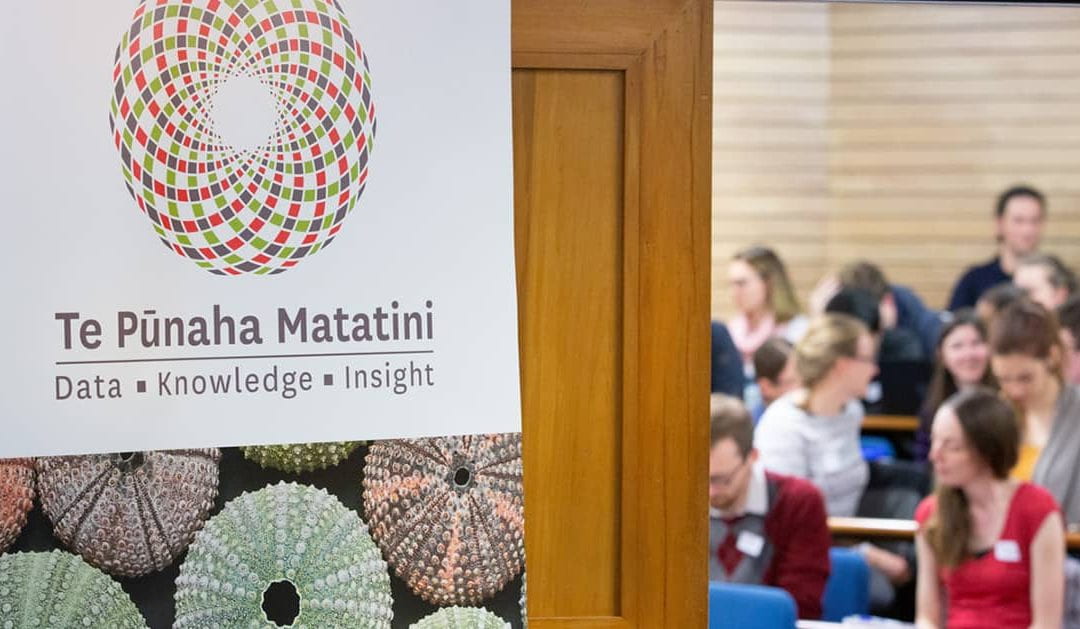
35 new investigators for Te Pūnaha Matatini
1 March 2023
E te pitomata o te rāngai rangahau matahou – Tēnā koutou – haere mai!
Koutou kua whaiwāhi ki waenga o ngā mātanga rangahau o Te Pūnaha Matatini – Tēna koutou – haere mai!
Koutou, te āhua nei, e whakapono nei ko Te Pūnaha Matatini tētehi huarahi whakaharahara hei whai mā koutou mō roro o ā koutou mahi rangahau – Tēnā koutou! Tēnā koutou! Tēnā koutou!
Nau mai! Piki mai! Haere mai!
Today we welcome 35 new principal investigators from across Aotearoa New Zealand to Te Pūnaha Matatini, the national Centre of Research Excellence for complex systems.
Kaumātua Professor Tom Roa extends “a very warm and hearty welcome to the potential in this group of researchers who have won places amongst Te Pūnaha Matatini’s very dedicated team.”
Te Pūnaha Matatini – literally ‘the meeting place of many faces’ – is a Tertiary Education Commission-funded CoRE with a focus on interdisciplinary and complex systems research. We develop approaches that enable better decision-making about Aotearoa New Zealand’s environment, economy and society.
These new principal investigators will be able to participate in Te Pūnaha Matatini’s research programmes, meetings and workshops, apply for funding, have a say in how we evolve, and contribute to meeting the strategic objectives of the CoRE. They will also be able to supervise Te Pūnaha Matatini PhD students, and bring their other PhD students and post-doctoral fellows into our emerging scientist network, TPM Whānau.
“Te Pūnaha Matatini’s world is opening up with the arrival of these new investigators,” says Director Associate Professor Cilla Wehi. “They’re bringing fresh ideas and they’re bringing new passion. It’s going to be really exciting to see what we can do together.”
“Every conversation I have with one of our new investigators gets me inspired.”
New Te Pūnaha Matatini investigators
- Associate Professor David Aguirre (Ngāti Kahungunu, Te Whānau-ā-Apanui, Ngāti Tuwharetoa), Massey University
- Dr Hitaua Arahanga-Doyle (Ngāi Tahu, Te Ati Haunui-a-Pāpārangi), University of Otago
- Dr Pete Russell (Ngāpuhi), University of Otago
- Dr Kelly Blincoe, Waipapa Taumata Rau – University of Auckland
- Dr Céline Cattoën-Gilbert, NIWA
- Justin Connolly (Waikato-Tainui), Deliberate
- Dr Mairéad de Róiste, Te Herenga Waka – Victoria University of Wellington
- Associate Professor Graham Donovan, Waipapa Taumata Rau – University of Auckland
- Dr Tom Etherington, Manaaki Whenua – Landcare Research
- Dr Peni Fukofuka, University of Canterbury
- Dr Gillian Gibb (Ngāti Mutunga), Massey University
- Professor Nick Golledge, Te Herenga Waka – Victoria University of Wellington
- Dr Gina Grimshaw, Te Herenga Waka – Victoria University of Wellington
- Dr Kyle Higham, Motu Research
- Mckayla Holloway (Ngāi Tahu), Cawthron Institute
- Professor Jodie Hunter, Massey University
- Associate Professor Libby Liggins, Massey University
- Dr Catriona MacLeod, Manaaki Whenua – Landcare Research
- Associate Professor Alex Macmillan, University of Otago
- Dr Zac McIvor (Te Patupō), University of Otago
- Dr Sereana Naepi, Waipapa Taumata Rau – University of Auckland
- Dr Lisa Pilkington, Waipapa Taumata Rau – University of Auckland
- Dr Matt Pinkerton, NIWA
- Associate Professor Anna Santure, Waipapa Taumata Rau – University of Auckland
- Associate Professor Dianne Sika-Paotonu, University of Otago
- Dr Simon Stewart (Ngāti Kahungunu ki Wairoa), Cawthron Institute
- Associate Professor Daniel Stouffer, University of Canterbury
- Dr Priya Subramanian, Waipapa Taumata Rau – University of Auckland
- Dr Julia Talbot-Jones, Te Herenga Waka – Victoria University of Wellington
- Dr Hiran Thabrew, Waipapa Taumata Rau – University of Auckland
- Professor Holly Thorpe, University of Waikato
- Te Rerekohu Tuterangiwhiu (Ngapuhi, Ngaruahine, Ngai Te Rangi Waikato), Cawthron Institute
- Professor Rhema Vaithianathan, AUT
- Dr Grace Villamor, Scion
- Dr Jesse Whitehead, University of Waikato
Te Pūnaha Matatini received more than 60 excellent applications in this call for investigators, which meant the Strategic Leadership Group had some exceptionally difficult decision-making to do. We were awed by the breadth of expertise in the applications, and the openness and passion of the applicants.
“I thank all of those who applied, because it really was a privilege to read their applications,” says Cilla. “I would have loved to accept so many more.”
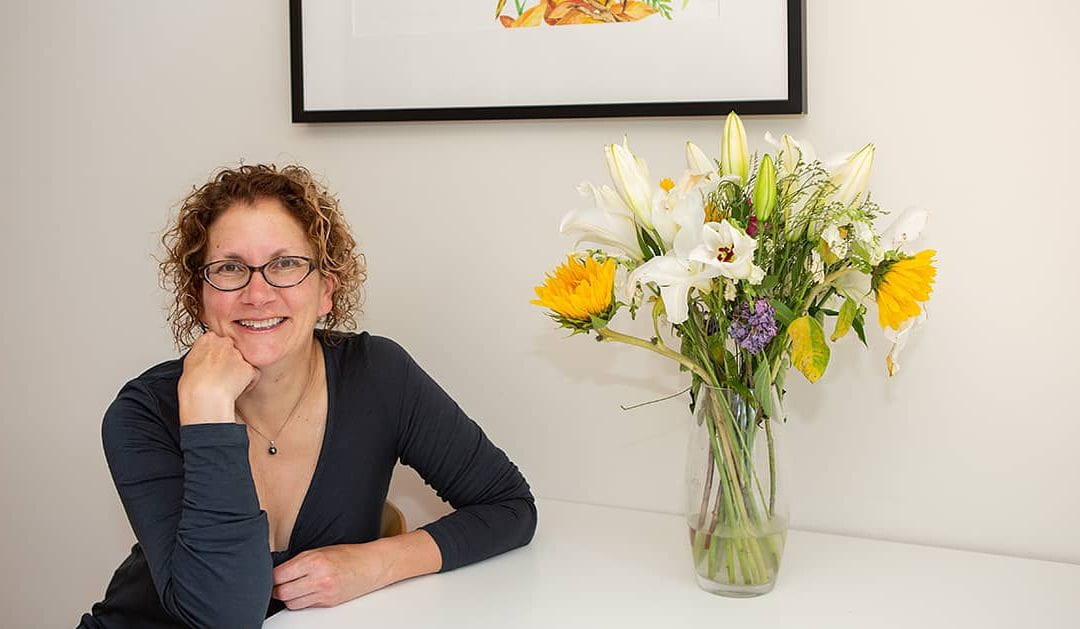
You would fit in well with this crowd because you use data in creative ways
23 February 2023
When the Crown Pastoral Land Reform Bill passed its third reading in May 2022, Te Pūnaha Matatini Principal Investigator Professor Ann Brower was delivering a shared inaugural lecture with Principal Investigator Professor Alex James.
Their lecture was on changing the world, one data point at a time. Ann had been working for 15 years to achieve the change enshrined by the bill that passed that day, and would have loved to have been in parliament to see it happen. But delivering her first lecture as a professor on changing the world with data was an appropriate reason to miss it.
The Crown Pastoral Land Reform Bill ended tenure review, a process introduced in 1991 in which leased Crown land could be bought by the government for conservation or bought in full by the farmer who holds the lease. Tenure review affected 10 per cent of Aotearoa New Zealand’s landmass – 2.4 million hectares along the eastern slope of Te Waipounamu the South Island’s Main Divide.
For Ann, the high country in Te Waipounamu is “possibly the most treasured 10 per cent of the country, with the possible exception of the coast. It’s iconic and mythical and culturally significant in a lot of ways.”
In November 2022, the Royal Society Te Apārangi awarded Ann the Charles Fleming Award for Environmental Achievement for protecting the environment through her work on high country tenure review. It was a long road to get to this point of awards and inaugural lectures.
Ann first arrived in Aotearoa on a Fulbright scholarship and, through her research into the politics of land reform as an early career researcher, exposed what she calls the “biggest and quietest rort in the Southern Hemisphere”. She discovered that the Crown had been paying the runholders of South Island high-country stations to freehold parts of their pastoral lease farms, and letting them purchase the rest, often to subdivide for massive profits.
Land that went into private ownership in these deals included significant parts of the shorelines of Lakes Tekapo, Wānaka, Hāwea and Wakatipu, as well as some of the finest vineyard country in Central Otago.
Ann’s initial research in the mid-2000s showed that the Crown was making a net loss on these sales and purchases. The release of her first report detailing these findings caused considerable controversy, earning her some choice epithets, like the ‘chirpy anti-Christ’ and a ‘socialist infection’. Later analysis showed that newly freeholded land sold for an average of around 1,000 times what the Crown sold it for, resulting in an estimated $275 million capital gain.
As the project expanded to include law academics, economists and ecologists, the full scope of the shortcomings of tenure review were brought into stark relief.
“The financial outcomes of the land reform were nonsensically bad,” says Ann. “But the environmental and ecological outcomes were borderline criminal. The land with the most ecological value was privatised and the land with the least conservation value was conserved.”
Ann worked closely with a succession of ministers about this issue through several changes of government. “Because I knew something about high country tenure review that the public had essentially paid me to find out, I felt like it was my job to share that as appropriate.”
“Speaking the truth, as we see it, is our job as academics.”
It was Alex James – who Ann was sharing her inaugural lecture with the night the bill passed ending tenure review – who suggested that she get involved with Te Pūnaha Matatini. “Alex told me ‘You would fit in well with this crowd because you use data in creative ways,” says Ann. “She said ‘I think you could learn some new methods and grow your use of data in creative ways.’ And that Te Pūnaha Matatini folks could learn from the ways that I use data to make the world a better place.”
“In sum she was right,” says Ann. “The creative use of data was the connection.”
Ann is now putting data to creative use in leading one of the current core Te Pūnaha Matatini projects to better understand braided rivers, another iconic feature of Te Waipounamu. This project integrates legal, economic, social, and cultural factors into the well-established models of the topology of braided rivers, along with models of climatic uncertainty to better understand these unique landscape features.
The successful ending of tenure review and Ann’s recognition for the environmental impact of her work is bittersweet. “It’s nice to have an impact,” reflects Ann. “But that impact really came too late. If they had made this change 17 years ago, when I first showed them the evidence, it would have been a much different situation.”
She still loves the high country, though. “It’s such an amazing, rich story,” Ann concludes. “I never get tired of it.”
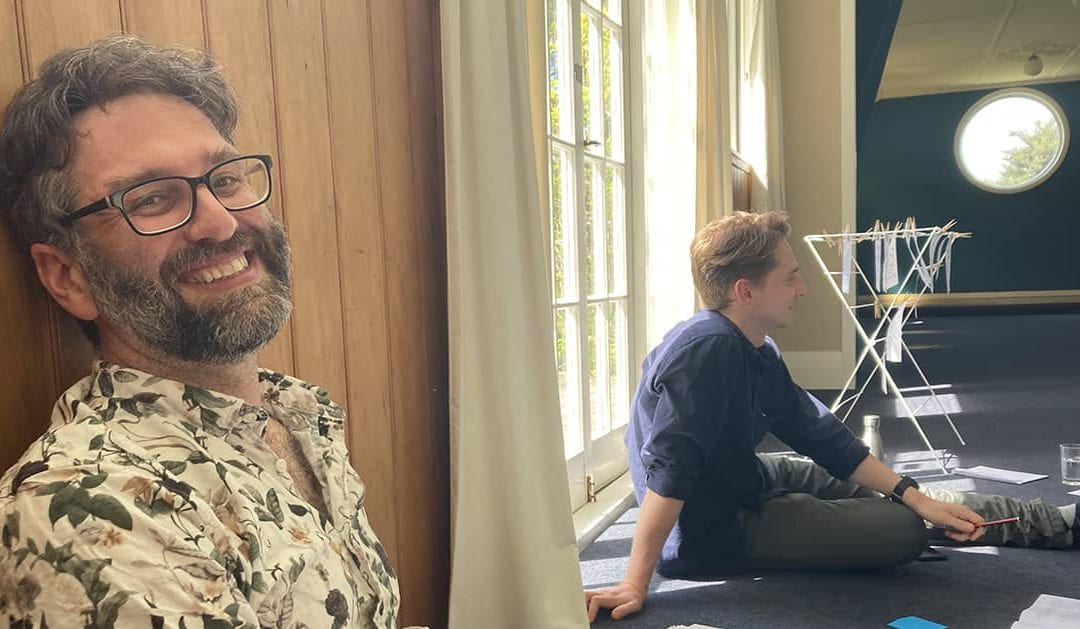
Meet our investigators: Will Godsoe
1 December 2022
Te Pūnaha Matatini – the meeting place of many faces – is the Aotearoa New Zealand Centre of Research Excellence for complex systems. We’re looking for new faces to join our community, so we thought you might like to meet some of us.
Dr William Godsoe is an ecologist who tries to match observations of biological diversity with rigorous statistical modelling. He is a senior lecturer at Lincoln University and a principal investigator at Te Pūnaha Matatini.
Will seeks to better forecast how species will respond to climate change and other environmental disturbances. He integrates evolution, mathematics, natural history, game theory and biology with fieldwork to derive a richer understanding of when species thrive in an uncertain world.
“The work I do tends to be odd because it links ideas from different groups of researchers,” says Will, “making it hard to explain to many of my colleagues. Investigators at Te Pūnaha Matatini are accustomed to this sort of oddity, and very good at listening and discussing across disciplines.”
He says that Te Pūnaha Matatini has felt like a second home for him, and he appreciates the kindness of Te Pūnaha Matatini Director Cilla Wehi.
Being a part of Te Pūnaha Matatini has shown Will how the values that underpin research can profoundly shape what can be achieved. “I think this is a deep lesson, and one that I try to implement in my work,” he says.
“It’s a great team of people to work with.”
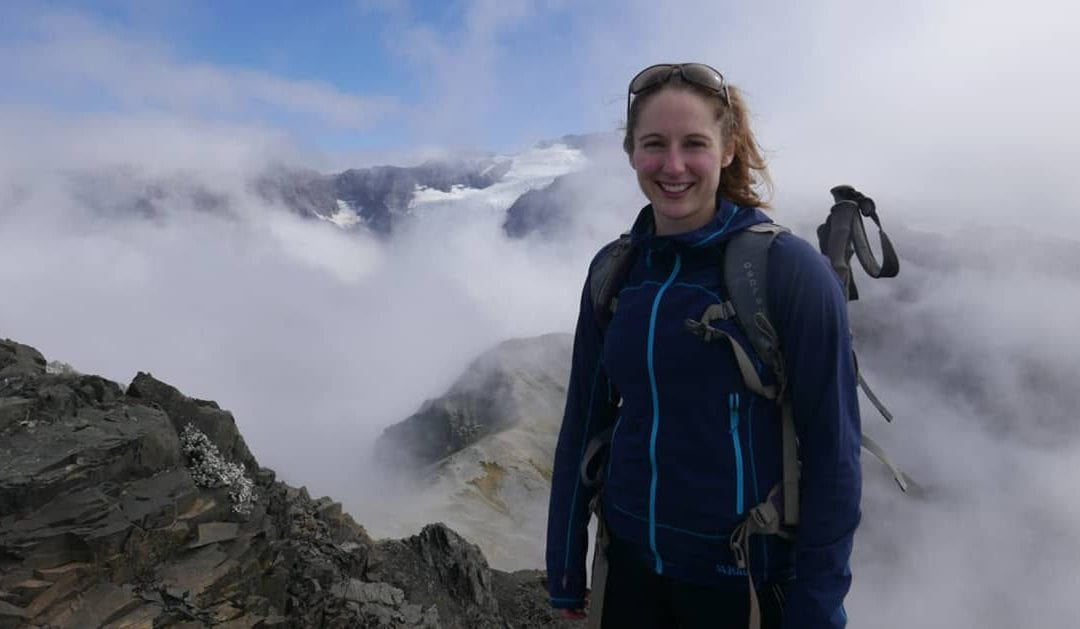
Meet our investigators: Rachelle Binny
24 November 2022
Te Pūnaha Matatini – the meeting place of many faces – is the Aotearoa New Zealand Centre of Research Excellence for complex systems. We’re looking for new faces to join our community, so we thought you might like to meet some of us.
Dr Rachelle Binny works as a mathematical modeller in wildlife ecology and management at Manaaki Whenua Landcare Research, and is a principal investigator at Te Pūnaha Matatini.
Rachelle joined Te Pūnaha Matatini as a postgraduate student when it was first established as a Centre of Research Excellence (CoRE) in 2014 and was the inaugural chair of TPM Whānau – Te Pūnaha Matatini’s network for early career researchers.
“In the first few years we worked had to establish TPM Whānau as an inclusive and supportive community of early career researchers, and to support early career researchers to take on leadership roles.” says Rachelle. “A few years later I became an investigator. This felt like a smooth transition because of the connections I had made with other investigators during my time in TPM Whānau.”
“Being a mathematical biologist, my research spans disciplines and is very data-driven, so I feel right at home in Te Pūnaha Matatini’s transdisciplinary team. Te Pūnaha Matatini has allowed me to connect with and learn from other scientists with diverse expertise, and to contribute to research that has had real impact for Aotearoa New Zealand.”
“Te Pūnaha Matatini’s culture is something special. Our values of manaakitanga, tika, tapu and pono are woven through all of our activities and the ways we engage with one another, and with the wider science community and public. Te Pūnaha Matatini’s Director Cilla Wehi leads strongly by example in guiding a kind, inclusive and diverse research culture.”
Rachelle says that it has been rewarding to watch emerging career researchers carry the baton of TPM Whānau forward and continue to grow its community. She has particularly enjoyed working alongside these early career researchers, and co-supervising Te Pūnaha Matatini PhD projects.
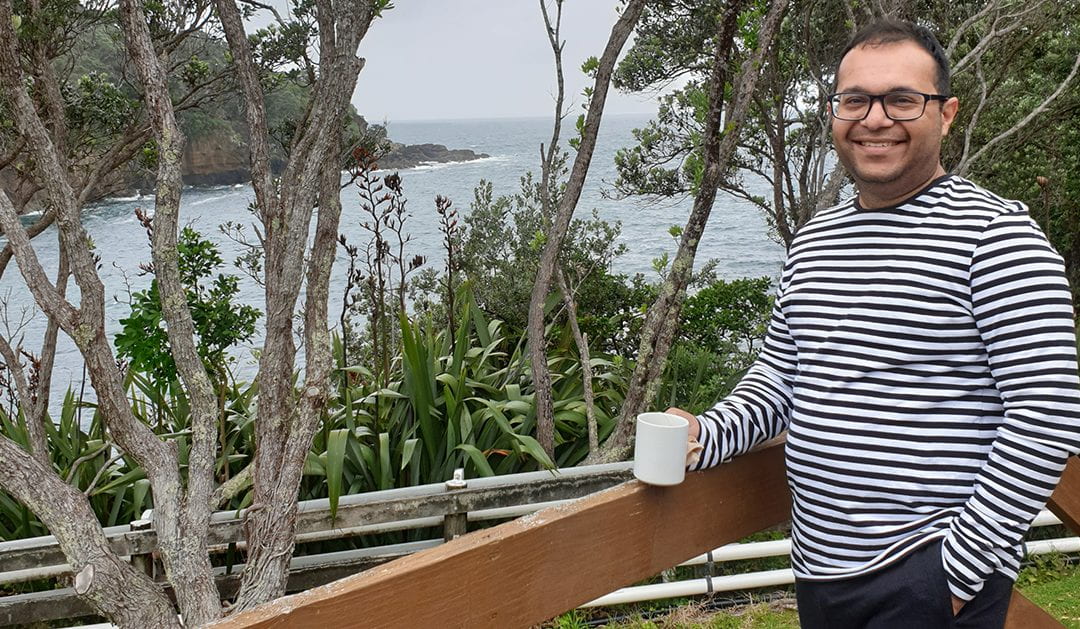
Meet our investigators: Mubashir Qasim
15 November 2022
Te Pūnaha Matatini – the meeting place of many faces – is the Aotearoa New Zealand Centre of Research Excellence for complex systems. We’re looking for new faces to join our community, so we thought you might like to meet some of us.
Dr Mubashir Qasim is an economist and data scientist who works at DairyNZ, and a principal investigator at Te Pūnaha Matatini.
Mubashir attended his first Te Pūnaha Matatini workshop as a PhD student, and was immediately hooked. He joined our early career researcher network, TPM Whānau, and is now a principal investigator.
“My involvement with Te Pūnaha Matatini has had a profound impact on my research,” says Mubashir. “I have been inspired by the applications of mathematical models in social science research by fellow principal investigators, which I frequently apply to my research work. Workshops and research retreats organised by Te Pūnaha Matatini give me the perfect platforms to communicate results and get feedback along the way.”
As someone who joined Te Pūnaha Matatini as an early career researcher, Mubashir has been deeply inspired by Director Cilla Wehi’s continuous support for young researchers. “Cilla’s encouragement of early career researchers to take leadership of projects in their area of expertise is particularly remarkable in training our future leaders.”
He says that Te Pūnaha Matatini’s culture is “diverse, collaborative and inclusive, and built to deliver excellence in inter-disciplinary research.”
“I am honoured and proud to be part of this exceptional organisation.”
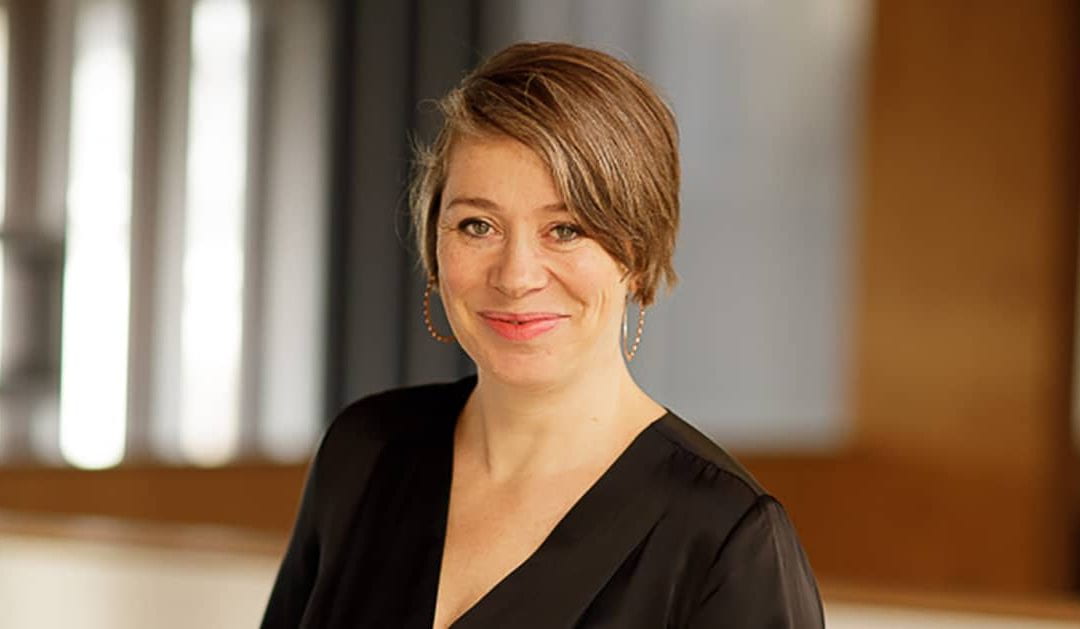
Meet our investigators: Anna Brown
10 November 2022
Te Pūnaha Matatini – the meeting place of many faces – is the Aotearoa New Zealand Centre of Research Excellence for complex systems. We’re looking for new faces to join our community, so we thought you might like to meet some of us.
Professor Anna Brown is a principal investigator at Te Pūnaha Matatini and founder and director of Toi Āria, a research centre at Massey University that is interested in harnessing design for positive social change through effective community engagement.
“My background is design,” says Anna. “I have come from a career in graphic and editorial design that has evolved into design in an expanded field. I suggest that when I say ‘design’ people think of that term in the most elastic meaning. Design of systems, of services, of research, of impact.”
“The work that I do now is research into design for public good — ranging from such things as better outcomes for rangatahi, reducing recidivism to rethinking the internet for the people of Aotearoa.”
“Being involved and associated with Te Pūnaha Matatini has given me so much already. Te Pūnaha Matatini is changing how I understand research can be within the academy. Often the design research undertaken by our team is not understood, or relegated to something outside of the known and therefore disregarded.”
“At Te Pūnaha Matatini people and processes are seen and celebrated and from this starting point incredible research is developed. Design and design approaches are welcomed by the research community and celebrated as something useful and valuable, especially when engaging with communities.”
Anna leads The Co-production Project, one of Te Pūnaha Matatini’s core research projects for 2021-2024. This project aims to develop knowledge of co-production to enable communities to be equal partners in research and subsequent development of services and solutions for women’s health in Aotearoa New Zealand. Te Pūnaha Matatini has a strong commitment to public engagement, and this project grew from conversations with other principal investigators.
“The culture of Te Pūnaha Matatini is inclusive and caring,” says Anna. “Working with the wider research teams and community has been (and this word is not often used in academic circles) delightful. Being part of a Centre of Research Excellence with the exemplary reputation of Te Pūnaha Matatini could feel overwhelming, but the welcoming atmosphere, the regard for all forms of research and the care for people has made it anything but.”
For Anna, this welcoming atmosphere comes right from the top. “Cilla Wehi embodies the values of Te Pūnaha Matatini in her leadership as director,” she says. “She is genuine, ethical and values each member of Te Pūnaha Matatini for what they bring. She brings mana to her role and inspires me to reciprocate all that she models.”
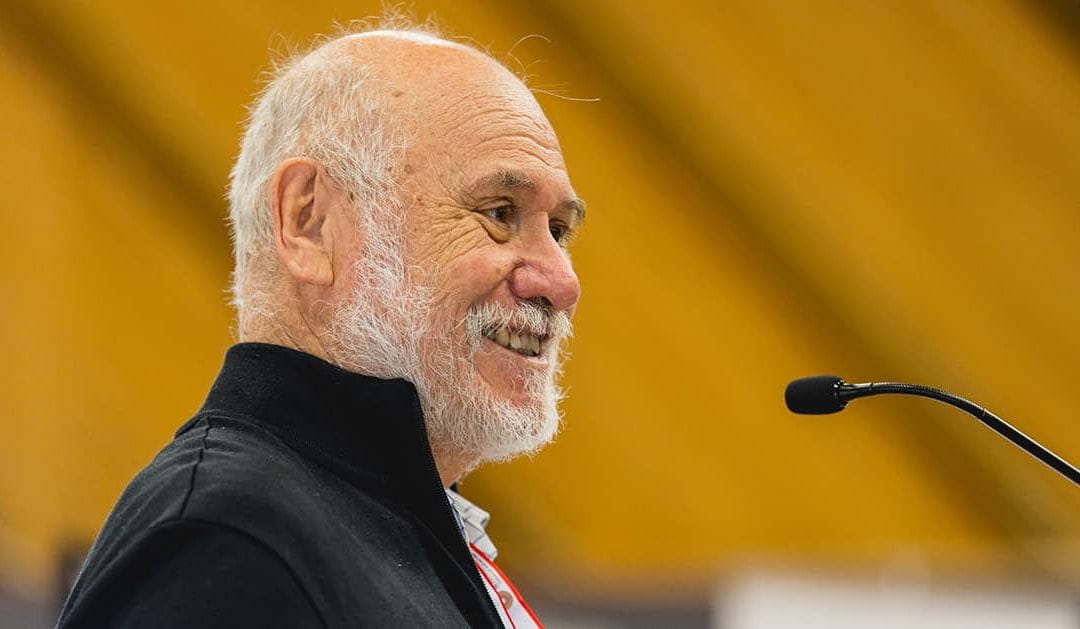
Meet our investigators: Tom Roa
7 November 2022
Te Pūnaha Matatini – the meeting place of many faces – is the Aotearoa New Zealand Centre of Research Excellence for complex systems. We’re looking for new faces to join our community, so we thought you might like to meet some of us.
Professor Tom Roa (Ngāti Maniapoto, Waikato) is our Kaumātua and a Principal Investigator at Te Pūnaha Matatini. He provides stability and wisdom as part of our leadership team.
Matua Tom is a Tainui leader, a familiar figure at marae around the country, and a scholar based in Te Pua Wānanga ki te Ao, the Faculty of Māori and Indigenous Studies at the University of Waikato. Over the years, Tom has been a leading figure helping to bring the Māori language into the mainstream, and he is one of the founders of Te Wiki o Te Reo Māori movement in the 1970s.
“As academics, we tend to get caught in our silos, and sometimes miss the opportunities that come from seeing what’s in the peripheral,” says Tom. “It’s exciting that we can invite others to be part of this whānau, and bring in new faces, new ideas, and new leadership in driving the research efforts of Te Pūnaha Matatini into a new space.”
“There’s a whānau atmosphere at Te Pūnaha Matatini,” Tom says. “There’s a culture of sharing information and finding ways that we can explore data and systems so that we can make sense of the complexities as a team. And always asking how we can use those complexities and various data to advance our aspirations for Aotearoa New Zealand.”
Tom has a longstanding research relationship with Te Pūnaha Matatini Director, Associate Professor Cilla Wehi. “Working with Cilla on various research efforts has shown me that she is a family oriented and earthed person,” he says. “With Te Pūnaha Matatini, I’ve seen her in a different light, and marveled at her ability to share the leadership role.”
“Being part of Ngāti Maniapoto, I’m very taken with te kawau mārō – the flight of the cormorant or shag. When the cormorant flies, its wings come in front of the body and push the body forward. The leader sticks its neck out and is not afraid to lead, knowing that when the leader tires, somebody else steps into place and takes a leading role. This was a primary fighting technique of my tupuna Maniapoto, and is symbolic of what I consider the culture of Te Pūnaha Matatini.”
“When Cilla asked me to come on board as Kaumātua, I looked at the research that Te Pūnaha Matatini was doing, and became very excited – particularly in terms of the complexities of systems. In my own work I look at the complexities of whakapapa – layering top to bottom but also from side to side, and the networks that whakapapa create. This happens with whakapapa, and tīkanga, and many other notions that are part of my Māori world. This fascinates me – so I find it very exciting being a part of this team.”
“I’m interested in encouraging research into complexities in tīkanga, te reo, and te ao Māori. There’s so much richness in mātauranga Māori that can enrich Aotearoa New Zealand society as a whole. I’m interested in the complexities of those various mātauranga – to say that mātauranga is one is like saying there’s only one science. There are so many fields to explore.”
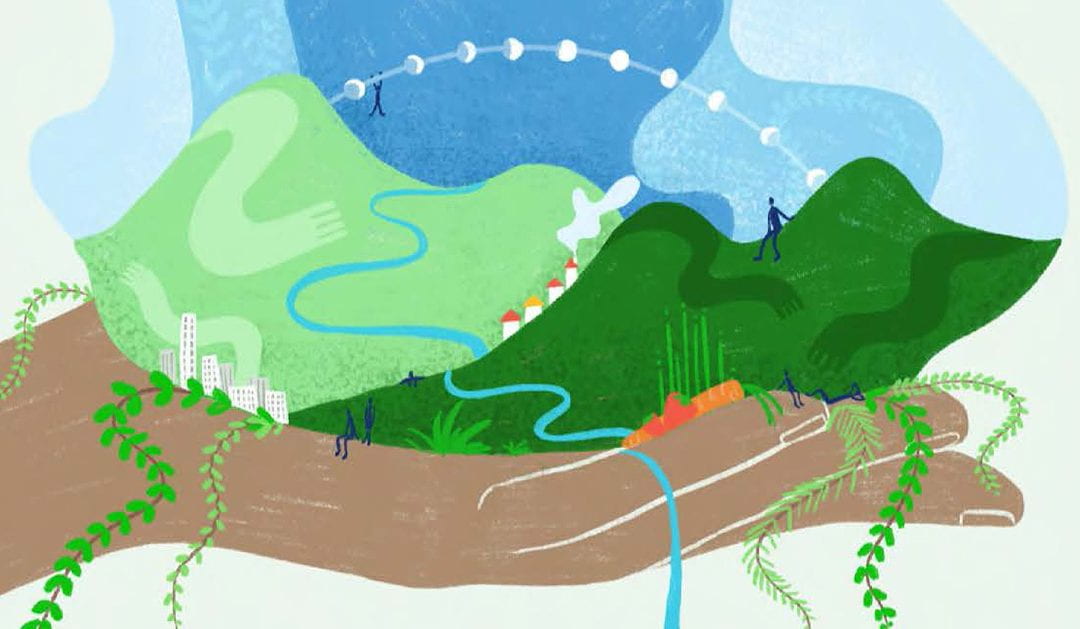
Healthy Families NZ is working well, but it’s a drop in the bucket
Image: Cover detail from ‘Community-up system change for health and wellbeing: Healthy Families NZ Summative Evaluation Report 2022’, designed by Toi Āria: Design for Public Good, Massey University (Anna Brown, Jean Donaldson and Morgan Dallas).
4 November 2022
Te Pūnaha Matatini Principal Investigator Dr Anna Matheson leads the team that has released a new report evaluating the Healthy Families NZ initiative.
Healthy Families NZ is a large-scale initiative that aims to create a healthier Aotearoa New Zealand by addressing the systems and environments that impact our health and wellbeing. It was launched in 2014 as a new approach to preventing chronic disease that recognises the importance of a systems change approach, along with existing population health efforts.
This initiative is happening in 10 different place-based communities around Aotearoa New Zealand, and involves innovative health promotion teams working to improve the way that organisations collaborate together and building on existing health and wellbeing initiatives to make change on the social determinants of health and wellbeing.
Anna, in partnership with Nan Wehipeihana, leads the team that has evaluated Healthy Families NZ throughout its existence. They have just released their fourth report, which focuses on the last four years, from 2017 – 2021. The recent phase of the evaluation concluded that Healthy Families NZ is continuing to make successful progress and has remained grounded in integrity to the purposes of the initiative. For the evaluation team, Healthy Families NZ is clearly demonstrating that comprehensive and effective action guided by local voices and local needs to address the determinants of health and wellbeing can be achieved.
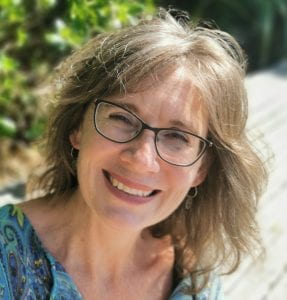
Dr Anna Matheson leads the team that has released a new report evaluating the Healthy Families NZ initiative.
Complex systems and thinking about how to change systems is a strong focus of Anna’s academic work. She co-leads the core Te Pūnaha Matatini research project ‘Ki te toi o te ora: System change to reverse health inequality and environmental degradation’. This academic background makes her perfectly placed to undertake this evaluation work. “Healthy Families NZ frames itself as a systems change initiative,” she says. “It’s trying to shift the systems that operate locally, and influence the wider systems that impact local stuff.”
The team took a complex systems approach to evaluating the initiative, which considered the different communities involved and their different contexts, and asked what was working for who, where, when and how. Healthy Families NZ is a complicated initiative to understand, so Anna engaged another Te Pūnaha Matatini Principal Investigator, Anna Brown, and the Toi Āria team to design the report.
The published report uses each community as a case study, drawing upon data like interviews, surveys and demographic data, but also asking the communities themselves to explain their successes in their own words. The team then used these quantitative and qualitative sources to explore the six key evaluation questions that Te Whatu Ora – Health New Zealand wanted answered for the report.
Overall, Healthy Families is “working well, but it’s a drop in the bucket!” says Anna. “Very little of the budget for health in Aotearoa New Zealand gets spent on trying to prevent disease and address the social determinants that we know are the main causes of inequities and poorer health outcomes.”
“Healthy Families NZ is a comparatively small investment, but the potential for it to make a huge difference down the track is significant, including saving the healthcare system money in terms of treatment for things like chronic diseases.”
She hopes that the report clearly articulates what Healthy Families NZ does, so that good policy decisions can be made from it.
